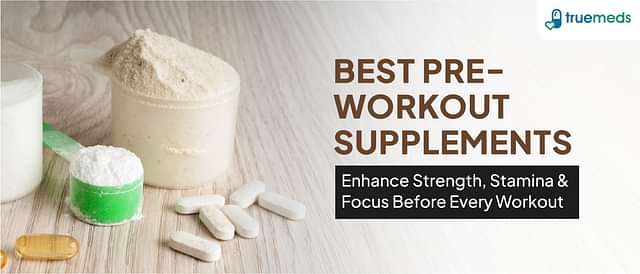Osteoporosis Exercise Which Promotes Bone Health for Strong Bones
Last updated on : 16 May, 2024
Read time : 5 min
What is Osteoporosis?
Osteoporosis is a disease that weakens bones, making them more fragile and prone to shatter easily. Exercises for osteoporosis can help you strengthen your bones as well as reduce your chance of falling by improving your balance. However, you must first obtain your doctor’s consent before commencing any workout regimen. Your doctor can recommend workouts based on your health, age, and physical limits. The is a significance of regular physical activity in the development and maintenance of healthy bones. Inactivity leads to bone loss.
How we can prevent Osteoporosis by doing exercises?
Falls and fractures can be prevented with a regular, well-designed fitness program. Because exercise increases balance, coordination, and flexibility, it strengthens bones and muscles. Exercises for Osteoporosis are significantly important.
Exercise strengthens bones like it does muscles. Exercise helps us grow strong bones and keeps them robust as we age. Bone is a living tissue that changes in reaction to influences. Regular exercise makes your bones grow more bone and denser. Bone health requires enough calcium and Vitamin D intake.
Exercises for Strong Bones:
There are numerous types of exercise, all of which have health benefits. Weight-bearing exercise and strength-training exercise are the two most effective types for building strong bones. Bone-strengthening exercises for osteoporosis are site-specific. Walking, for example, can strengthen bones in the legs and spine but not in the wrist.
Many older people experience upper spine sagging, which can be prevented or reduced with postural stretching and strengthening. In all of your activities, try to keep an upright spine posture.
There are two types of osteoporosis physical exercise for sustaining bone strength. One is weight-bearing exercise and the other is Strength training exercises for osteoporosis.
Weight bearing exercises for osteoporosis:
Any activity on your feet that works your bones and muscles against gravity is referred to as weight-bearing. When your feet and legs support your body weight, your bones are put under more strain, making them work harder. After adolescence, weight-bearing exercise can help prevent further bone loss and strengthen bones.
Weight-bearing exercises require your bones and muscles to work against gravity to keep you upright. The weight on your bones causes your bones to develop and get stronger. Weight bearing exercises for osteoporosis are high-impact exercises and low-impact exercises for osteoporosis.
High-impact workouts include,
- Jogging or running
- Jumping rope
- Step aerobics
- Tennis or other racquet sports
- Dancing
- Doing high-impact aerobics
- Hiking
- In general, stay away from jerky, fast movements. Slow, controlled motions are ideal exercises for osteoporosis.
Low-impact workouts include,
- Using elliptical machines as a form of exercise
- Low-impact aerobics is a fantastic workout.
- Making use of stair-climbing machines
- Outside or on a treadmill, go for a fast pace walk.
If you’re a newbie to fitness or haven’t worked out in a while, gradually increase your workout time until you reach 30 minutes of weight-bearing activity on most days of the week.
Bone strengthening exercises for osteoporosis:
Resistance is added to movement during strength-training activities to make muscles work harder and become stronger over time. Although resistance exercises are primarily used to increase muscle mass, they also place stress on bones and can build bone mass.
Bone Strengthening exercises involve using dumbbells, resistance bands, or bodyweight to build muscular endurance, particularly the spinal muscles that are crucial for posture. Resistance training can also contribute to bone density maintenance. Strength training exercises for osteoporosis, especially if you have discomfort, should be adjusted to your abilities and tolerance. Strength-training regimens can be developed with the guidance of a physical therapist or personal trainer who has worked with persons who have osteoporosis. To avoid injury and get the most out of your workout, use proper form and technique.
Flexibility, Stability, and Balance Exercises for Osteoporosis:
Your muscles will operate better if you move your joints through their flexion. Stretching should be done once your muscles have warmed up. Without striking, they should be done gently and carefully. Stretches that cause you to bend at the waist or flex your spine should be avoided. Consult your doctor about the best stretching exercises for osteoporosis for you.
Falls are especially dangerous for those who have osteoporosis. Stability and balance exercises train your muscles to operate together in a way that keeps you steady and reduces your chances of falling. Stability and balance can be improved with simple exercises like standing on one leg, yoga Pilates or movement-based exercises like tai chi.
Exercises that promote bone health:
Stomps on the ground:
The goal of osteoporosis exercise is to challenge the key areas of your body that are most commonly affected by the disease, such as your hips. Foot stomps are one hip bone exercise.
- Stomp your foot while standing, imagining you’re crushing a fictitious can beneath it.
- Rep on one foot four times, then switch to the other foot and repeat the exercise.
- If you’re having trouble keeping your balance, grab a railing or a sturdy piece of furniture.
Twists of the hamstrings:
The muscles in the backs of your upper legs are strengthened by hamstring twists. From a standing position, perform this exercise. To improve your balance, place your hands on a piece of heavy equipment or another sturdy object if necessary.
- Stand shoulder-width apart with your feet shoulder-width apart.
- Move your left foot back until only your toes are touching the floor.
- To lift your left heel toward your buttocks, contract the muscles in the back of your left leg.
- As you lower your left foot back to its starting position, maintain control.
- Repeat the exercise eight to twelve times more.
- Rest for a few moments before repeating the exercise on your right leg.
Squats:
Squats can help you strengthen your front legs and buttocks. This exercise is effective even if you don’t squat deeply.
- Begin by placing your feet hip-width apart. For balance, place your hands lightly on a sturdy piece of materials or a block.
- Squat down slowly by bending your knees. Maintain a straight back and a slightly forward lean, allowing your legs to work.
- Squat only to the point where your thighs are parallel to the floor.
- Return to a standing position by tightening your buttocks.
Rep to this exercise eight to twelve times more.
For the all latest coupons and offers on the medicines, follow us on Instagram and Facebook
Disclaimer
Our healthcare experts have carefully reviewed and compiled the information presented here to ensure accuracy and trustworthiness. It is important to note that this information serves as a general overview of the topic and is for informational purposes only. It is not intended to diagnose, prevent, or cure any health problem. This page does not establish a doctor-patient relationship, nor does it replace the advice or consultation of a registered medical practitioner. We recommend seeking guidance from your registered medical practitioner for any questions or concerns regarding your medical condition.
Popular Articles
Recent Articles
Top-Selling Medicines:
...View more
Top-Selling OTC:
...View more
Company
About UsHealth ArticleHealth StoriesDiseases & Health ConditionsAyurvedaAll MedicinesAll BrandsNeed HelpFAQSubscribe
Registered Office Address
Grievance Officer
Download Truemeds

Contact Us
Our customer representative team is available 7 days a week from 9 am - 9 pm.
v3.7.31
2025 - Truemeds | All rights reserved. Our content is for informational purposes only. See additional information.
Our Payment Partners





































